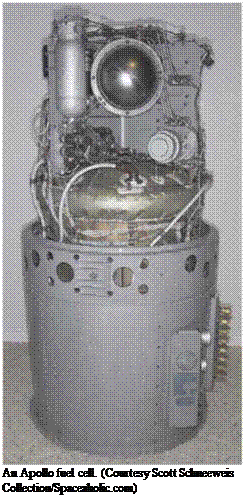SUSTAINING LIFE
 The Apollo command module (and to a lesser extent the lunar module) could be thought of as a mini-planet. All the basic requirements for human life over a two – week period were brought together inside a sealed conical machine less than four metres across and little over three metres high that could transport its occupants between worlds. Along with its service module, the spacecraft provided air, water, power and propulsion. It included a means of navigating across space and a way to negotiate Earth’s atmosphere upon return. It contained adequate supplies of food and warmth as well as the equipment that its crew would need for a programme of science during their journey. The life-support infrastructure of the Apollo spacecraft was under the watchful eye of the flight controller who sat at the EECOM console.
The Apollo command module (and to a lesser extent the lunar module) could be thought of as a mini-planet. All the basic requirements for human life over a two – week period were brought together inside a sealed conical machine less than four metres across and little over three metres high that could transport its occupants between worlds. Along with its service module, the spacecraft provided air, water, power and propulsion. It included a means of navigating across space and a way to negotiate Earth’s atmosphere upon return. It contained adequate supplies of food and warmth as well as the equipment that its crew would need for a programme of science during their journey. The life-support infrastructure of the Apollo spacecraft was under the watchful eye of the flight controller who sat at the EECOM console.
EECOM stood for electrical, environmental and communications, although evolving roles within mission control had removed the communications responsibility without changing the name.










